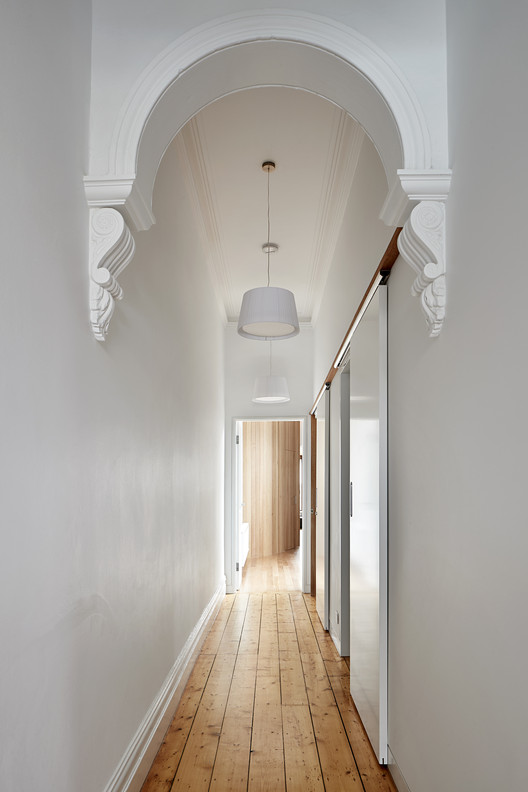
-
Architects: Steffen Welsch Architects
- Area: 134 m²
- Year: 2020
-
Manufacturers: Australian Sustainable Hardwoods (ASH), Colorbond, Osmo Polyx Oils, Urban Edge Ceramics, Weathertex

Text description provided by the architects. The practice of Feng Shui finds its origins in China, going back about 6,000 years. It literally translates to “wind and water” and is a concept aiming to design and plan buildings and their surroundings for harmony and happiness. Feng Shui calls on you to organise objects to allow for the flow of what is referred to as natural energy seen as moving through a space and all living things. In this context it is understood that a building’s layout, colours and materials affect the flow of energy.

Feng Sui design applies three core principles: allow energy to flow, balance between natural elements with their own sets of attributes including colour, texture and shape, and place objects that represent your life’s journey within a space. To a Westerner only vaguely familiar with some of the specific theories and ideas, there is a surprising correlation between Feng Shui and what we would call “good design”: sun light access, air and ventilation, balance of natural light, equal relationship between inside and out, comfort and privacy, balance of materials, a well organised environment.


The old terrace house was restored, a new curved timber wall at the end of the hallway works as both a link between old and new and a barrier to the street. The extension is separated with a courtyard for sunlight into the old, and natural light and ventilation into the new house. The hall linking terrace with extension was widened for a study with outdoor access. The curved timber wall, enclosing a store, leads into the kitchen planned to greet visitors at arrival and overlooking the courtyard and study.


Behind the store, a stair void appears. The back is coloured reflecting light into space below. Colour and materials only reveal themselves gradually, a design move often applied by Mexican architect Louis Barragan and one of my favourites. Between stair and kitchen, we placed the dining room, a busy, engaging, and open space, designed to encourage conversation.

The lounge room walls were skewed and stretched, drawing sunlight and garden into the dining room. The stairwell itself forms a large void prioritising space over utilities. It appears oversized. However, the benefits are obvious: elevated beyond providing access, the stair creates a light-filled and generous living space on a small footprint.

The timber floor of the dining continues into the ceiling of the adjacent lounge, a retreat with a sense of calmness looking back into the house, courtyard, and out into the garden. The upstairs rooms, more exposed to sun, wind, and rain are formed and finished to achieve a balance between shelter from elements and exploring views into the distance.

The best form of interaction is coincidental and the skill lies in planning the coincidence. Some layout and design decisions were made for this purpose evident in the brick platforms for seats facing dining space or lounge to allow for interaction. Like any building project, the Feng Shui house aims to balance user needs with cost, both financial and environmental.
To build climate-conscious requires building less, and in order to be accepted, we need to build better qualities with lesser means. We trust this has been achieved by applying principles of balance, meticulous planning, and playing with space and scale.























